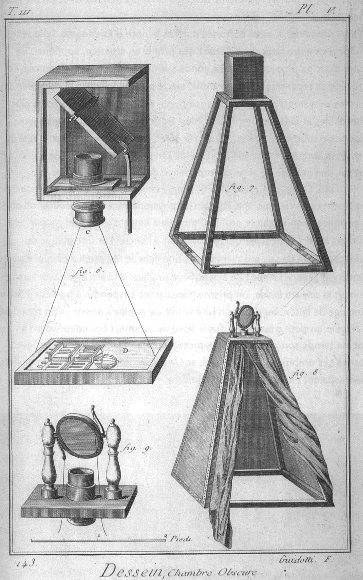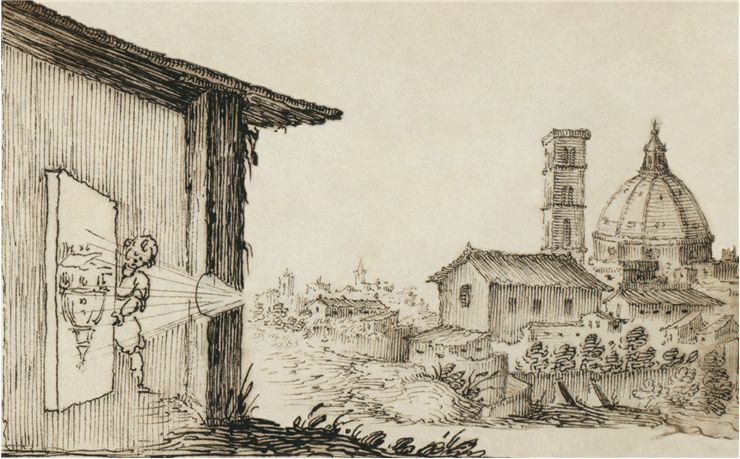History of Camera Obscura - Who Invented Camera Obscura?
Camera obscura (from Latin, meaning “darkened room”) is a device in a shape of a box or a room that lets the light through a small opening on one side and projects it on the other. In this simple variant, the image outside the box is projected upside-down. More complex cameras can use mirrors to project images upwards and right-side up and have lenses. Camera obscura is used as an aid for drawing and entertainment.
Camera obscura is a very old device. The oldest mention of its effect is by Mozi, a Chinese philosopher and the founder of Mohism, during the 5th century BC. He noticed that an image from the camera obscura is flipped upside down and from left to right due to light moving in a straight line. The Greek philosopher Aristotle noticed in the 4th century that light from a solar eclipse that passes through holes between the leaves projects an image of an eclipsed sun on the ground. The passing of light in a straight line was also noticed in Euclid's 4th century BC and Theon of Alexandria in the 4th century AD. Anthemius of Tralles, which designed the Hagia Sophia, used camera obscura in his experiments in the 6th century. Al-Kindi, an Arab philosopher, mathematician, physician, and musician, performed experiments with light and a pinhole in the 9th century and proved the behavior of light again.
All these scientists experimented with a small hole and light, but none of them suggested that a screen is used so an image from one side of a hole in the surface could be projected at the screen on the other. The first one to do so was Alhazen (also known as Ibn al-Haytham) in the 11th century. He was a scientist, mathematician, astronomer, and philosopher; he wrote the Book of Optics, and, among other things, he invented camera obscura and the pinhole camera. At about the same time, Chinese scientist Shen Kuo experimented with a camera obscura. He described it geometrically and even used it to explain some effects mentioned a couple of centuries ago but attributed to the area's geographic characteristics. As described by Roger Bacon, an English philosopher, camera obscura was used in the 13th century to observe solar eclipses safely. Arnaldus de Villa Nova, an alchemist, astrologer, and physician, used camera obscura simultaneously as a projector for entertainment. Artists started using camera obscura in the 15th century. Leonardo da Vinci talks about camera obscura in his “Codex Atlanticus,” a twelve-volume bound set of his drawings and writings. He also talked about flying machines, weaponry, and musical instruments. An Italian scholar, Giambattista della Porta, improved camera obscura by adding a lens at the place where light enters the box. He also used camera obscura to explain how the human eye works. German astronomer Johannes Kepler used the term “camera obscura” for the first time in 1604. Johann Zahn, the writer of "Oculus Artificialis Teledioptricus Sive Telescopium,” writes in his book in the 17th century about camera obscura and the magic lantern, among other optical instruments. In the 18th century, Conte Francesco Algarotti wrote his book “Saggio sopra Pittura.” He dedicated a whole chapter to the use of camera obcura (or, as he calls it, “camera ottica” ("optic chamber")) in painting.
Early models were large and consisted of a literal room or a tent (Johannes Kepler used a tent.) Later, more portable variants were invented. They were wooden boxes with a lens instead of a pinhole that could be moved to provide a focus. They also had a mirror that rotated images and a screen onto which an image was projected. These cameras were the basis for early photographic cameras.

